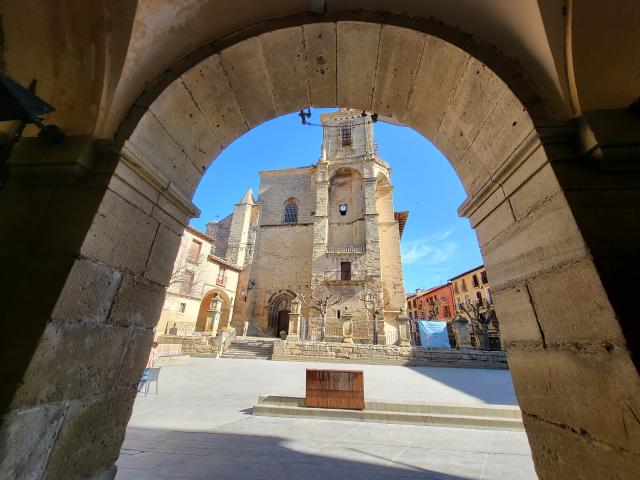Church of Santa María

The remains of Cesare Borgia rest outside the temple.
Built in Gothic style at the end of the 13th century and beginning of the 14th century, it underwent extensions and modifications in the 16th and 17th centuries. Since 1931 it has the category of National Monument. Its west façade is from the 14th century and the main one is from the Renaissance.
In front of the portal, on the floor, is the tombstone of Cesare Borgia, son of Pope Alexander VI and captain of the Navarrese armies, who died in an ambush near Viana on March 11, 1507.
The tower, also Renaissance, was built at the end of the 16th century.
The temple has three naves, a wider central one and two on both sides, with chapels between the buttresses.
The main altar, in baroque style, from the end of the 17th century, represents the Virgin of the Assumption surrounded by the twelve apostles.
The main chapel is decorated with tempera paintings by José Bravo, from 1731.
At the end of the 17th century, the lateral naves were enlarged, creating the sacristy and an ambulatory.




